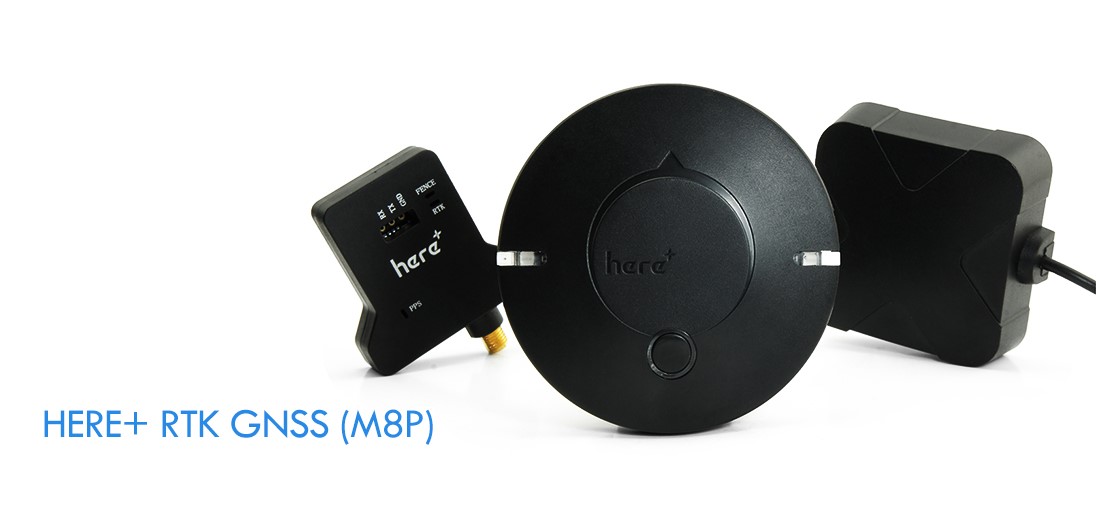The anticipated growth of unmanned aerial vehicles (UAVs, or drones) through 2020 highlights the necessity of reliable, fault-resilient flight control and navigation. The 2016 worldwide market for drone shipments exceeded 2.2 million, according to Gartner, totaling $4.5 billion in sales. Looking ahead, Goldman Sachs is predicting a $100 billion drone market by 2020, fueled by growing demand from the commercial and civil government sectors.
The Federal Aviation Administration mandates a 400-foot height limit for commercial drones, and calls for such drones to be flown by someone with a remote pilot certificate. Accurate flight control and positioning thus becomes critical in the crowded airspace expected in the near future.In less than five years, the non-military drone market in China has become a hotbed of drone development, with Chinese suppliers dominating the market. Hong Kong-based HEX Technology, a supplier of open-source flight controllers for UAVs, is ideally positioned to take advantage of such a supply chain. HEX works to promote the application of open source technology in research and commercial sectors by providing high-quality open-source UAV hardware at reasonable prices. Through its commitment to open-source interfaces, HEX allows users to add their own features and capabilities depending on the specific application for their UAV.In order to ensure its new Pixhawk2.1(The Cube) controller line met the complementary requirements of light weight and high reliability, HEX turned to Ireland-based Taoglas, an antenna specialist with a 13-year history of providing embedded antennas for LTE base stations, M2M and IoT networks, and specialized medical and industrial applications. HEX’s collaboration with Taoglas is indicative of the latter company’s expansion into geolocation markets using global navigational satellite systems (GNSS) such as GPS and GLONASS. A Need for Precision AccuracyHEX currently offers two flight-controller units in the Pixhawk2.1 (The Cube) line, the Pixhawk2.1 (The Cube) for standard carrier board and the Pixhawk2.1 (The Cube) Edision version. HEX also offers two GNSS modules, Here (M8N) and Here + RTK (M8P), which integrates real-time kinematics (RTK) features to improve GNSS accuracy through measuring the satellite signal’s carrier wave. Pixhawk2.1 (The Cube)’s modularity provides flexibility in the choice of carrier boards, while Here+ allows centimeter-level positioning accuracy of UAVs during operation, utilizing both an airborne module and base module. Both of these units can be easily integrated into commercial drones used in construction, surveillance, mapping, and agriculture.For drones to be effective in commercial and industrial use, they need highly reliable and efficient antenna solutions with lightweight components for better accuracy and endurance. Gene Wu, managing director of HEX Technology Ltd., said that Taoglas already had developed a reputation for quality and value in terrestrial antenna markets, so that when the Pixhawk2.1 (The Cube) controllers were in design, HEX “knew exactly where to look.” Gene said that Taoglas had experience in both UAVs and RTK technology, and consequently had an off-the-shelf solution available for both Pixhawk2.1 (The Cube) controllers.HEX was designing base-and-rover UAV controllers based on u-blox’s M8P module, requiring high-accuracy GNSS. The weight and size of antennas for geopositioning must meet strict requirements for weight and volume, due to the small footprint of both the drone and base controller. Positioning accuracy is also paramount, therefore the GNSS signal reception quality needs to be strong, and the antenna’s circuitry needs to help with resistance to external interference.Because of Taoglas’s existing experience serving UAV accounts, the company could quickly identify and narrow down antenna selection, and supply samples to HEX. For the base controller, HEX chose the Taoglas MagmaX AA.171 dual-feed external GNSS antenna. This is a magnetic-mount external antenna with a low-axial ration, ideal for robust, covert installations requiring small size and durability. Its performance characteristics match larger RTK antennas, but it is implemented in a dual-feed 35x35x6mm patch. The antenna offers front-end SAW filtering, and integrates two low-noise amplifiers to provide active gain of more than 30dB.For its rover solution, HEX chose the Taoglas passive GPS/GLONASS/BEIDOU patch antenna, which can be easily integrated with electronics on the drone. The patch antenna features a simple small form factor which is tuned for all worldwide wideband GNSS networks, including Galileo and BeiDou as well as GPS and GLONASS.By integrating accurate and reliable antennas into its flight controllers, HEX can offer UAV manufacturers levels of accuracy to expand into commercial applications supported by today’s drone market, such as precision crop spraying in agriculture, accurate fault location in oil pipeline inspection, fine-grained address location for drone delivery services, and precise support of humanitarian aid for reliable delivery of diagnostics and medicine in areas impacted by natural disasters.As the UAV market matures, the very definition of what constitutes a commercial drone is changing. Gartner Group, for example, only counts as drones those airborne vehicles connected to the Internet or specialized communication networks. The mapping requirements of emerging enterprise and civil applications likewise will make a geopositioning solution based on GNSS satellite networks an entry-level requirement for commercial drones. HEX and Taoglas have collaborated to provide these necessary flight-control services.“Accuracy and reliability are part of Taoglas’s pedigree, and these two elements are critical in the drone market as it grows to include a wider variety of applications,” HEX’s WU said. “Taoglas has deep experience working with drone technologies, and it was a pleasure to put this expertise to use for HEX.”
A Need for Precision AccuracyHEX currently offers two flight-controller units in the Pixhawk2.1 (The Cube) line, the Pixhawk2.1 (The Cube) for standard carrier board and the Pixhawk2.1 (The Cube) Edision version. HEX also offers two GNSS modules, Here (M8N) and Here + RTK (M8P), which integrates real-time kinematics (RTK) features to improve GNSS accuracy through measuring the satellite signal’s carrier wave. Pixhawk2.1 (The Cube)’s modularity provides flexibility in the choice of carrier boards, while Here+ allows centimeter-level positioning accuracy of UAVs during operation, utilizing both an airborne module and base module. Both of these units can be easily integrated into commercial drones used in construction, surveillance, mapping, and agriculture.For drones to be effective in commercial and industrial use, they need highly reliable and efficient antenna solutions with lightweight components for better accuracy and endurance. Gene Wu, managing director of HEX Technology Ltd., said that Taoglas already had developed a reputation for quality and value in terrestrial antenna markets, so that when the Pixhawk2.1 (The Cube) controllers were in design, HEX “knew exactly where to look.” Gene said that Taoglas had experience in both UAVs and RTK technology, and consequently had an off-the-shelf solution available for both Pixhawk2.1 (The Cube) controllers.HEX was designing base-and-rover UAV controllers based on u-blox’s M8P module, requiring high-accuracy GNSS. The weight and size of antennas for geopositioning must meet strict requirements for weight and volume, due to the small footprint of both the drone and base controller. Positioning accuracy is also paramount, therefore the GNSS signal reception quality needs to be strong, and the antenna’s circuitry needs to help with resistance to external interference.Because of Taoglas’s existing experience serving UAV accounts, the company could quickly identify and narrow down antenna selection, and supply samples to HEX. For the base controller, HEX chose the Taoglas MagmaX AA.171 dual-feed external GNSS antenna. This is a magnetic-mount external antenna with a low-axial ration, ideal for robust, covert installations requiring small size and durability. Its performance characteristics match larger RTK antennas, but it is implemented in a dual-feed 35x35x6mm patch. The antenna offers front-end SAW filtering, and integrates two low-noise amplifiers to provide active gain of more than 30dB.For its rover solution, HEX chose the Taoglas passive GPS/GLONASS/BEIDOU patch antenna, which can be easily integrated with electronics on the drone. The patch antenna features a simple small form factor which is tuned for all worldwide wideband GNSS networks, including Galileo and BeiDou as well as GPS and GLONASS.By integrating accurate and reliable antennas into its flight controllers, HEX can offer UAV manufacturers levels of accuracy to expand into commercial applications supported by today’s drone market, such as precision crop spraying in agriculture, accurate fault location in oil pipeline inspection, fine-grained address location for drone delivery services, and precise support of humanitarian aid for reliable delivery of diagnostics and medicine in areas impacted by natural disasters.As the UAV market matures, the very definition of what constitutes a commercial drone is changing. Gartner Group, for example, only counts as drones those airborne vehicles connected to the Internet or specialized communication networks. The mapping requirements of emerging enterprise and civil applications likewise will make a geopositioning solution based on GNSS satellite networks an entry-level requirement for commercial drones. HEX and Taoglas have collaborated to provide these necessary flight-control services.“Accuracy and reliability are part of Taoglas’s pedigree, and these two elements are critical in the drone market as it grows to include a wider variety of applications,” HEX’s WU said. “Taoglas has deep experience working with drone technologies, and it was a pleasure to put this expertise to use for HEX.” 



.jpg.small.400x400.jpg)











Comments